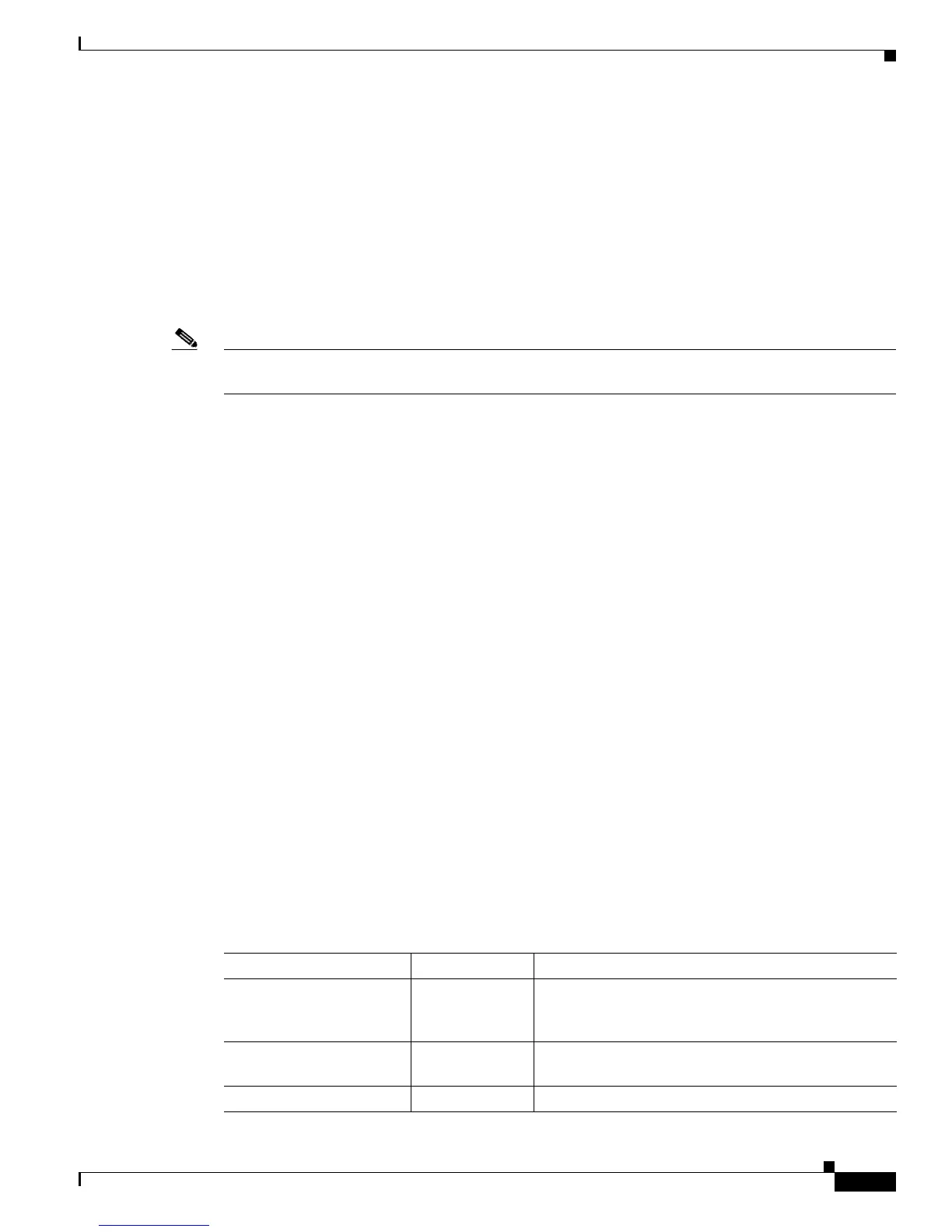10-5
Cisco 10000 Series Router Quality of Service Configuration Guide
OL-7433-09
Chapter 10 Overhead Accounting
Configuration Commands for Overhead Accounting
Configuration Commands for Overhead Accounting
To enable overhead accounting, use the shape and bandwidth commands. These commands allow you
to specify the encapsulation type and user-defined offset that the router uses in calculating overhead. The
commands have the following syntax:
shape rate [account {{qinq | dot1q} {aal5 | aal3} {subscriber-encap}} | {user-defined offset
[atm]}]
bandwidth {bandwidth-kbps | percent percentage | remaining percent percentage} {{qinq |
dot1q} {aal5 | aal3} {subscriber-encap}} | {user-defined offset [atm]}]
Note The options {{qinq | dot1q} {aal5 | aal3} {subscriber-encap}} and {user-defined offset [atm]} are
mutually exclusive.
Subscriber Line Encapsulation Types
The subscriber-encap option of the shape and bandwidth commands specifies the encapsulation type
at the subscriber line. The router supports the following subscriber line encapsulation types:
• snap-1483routed
• mux-1483routed
• snap-dot1q-rbe
• mux-dot1q-rbe
• snap-pppoa
• mux-pppoa
• snap-rbe
• mux-rbe
Overhead Calculation on the Router
When calculating overhead for traffic shaping, the router considers the encapsulation type used between
the BRAS and the DSLAM, and between the DSLAM and CPE.
Table 10-1 describes the fields the router uses for the various encapsulation types when calculating ATM
overhead.
Ta b l e 10-1 Overhead Calculation
Encapsulation Type Number of Bytes Description
802.1Q 18 6-byte destination MAC address + 6-byte source MAC
address + 2-byte protocol ID (0x8100) + 2-byte
VID/CFI/PRIORITY + 2-byte length/type
802.3 14 6-byte destination MAC address + 6-byte source MAC
address + 2-byte protocol ID (0x8000)
AAL5 MUX plus 1483 8 8-byte AAL5 trailer

